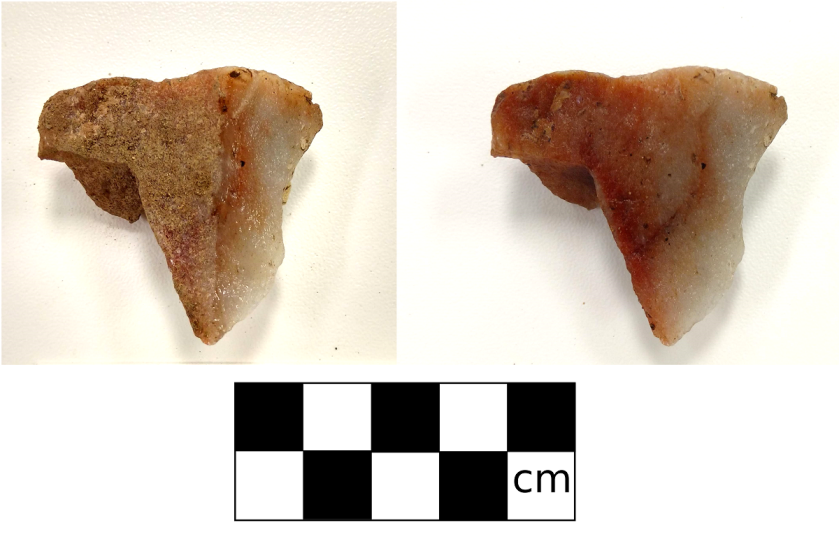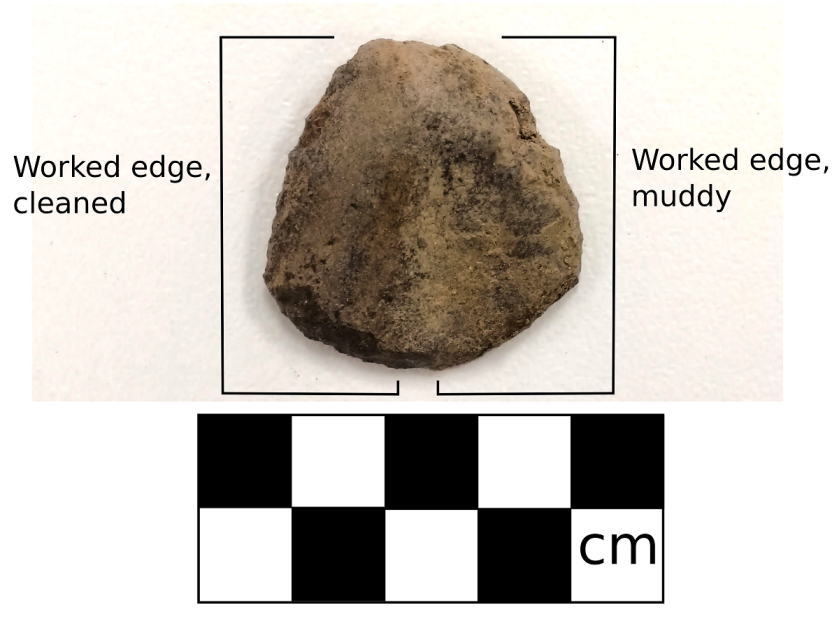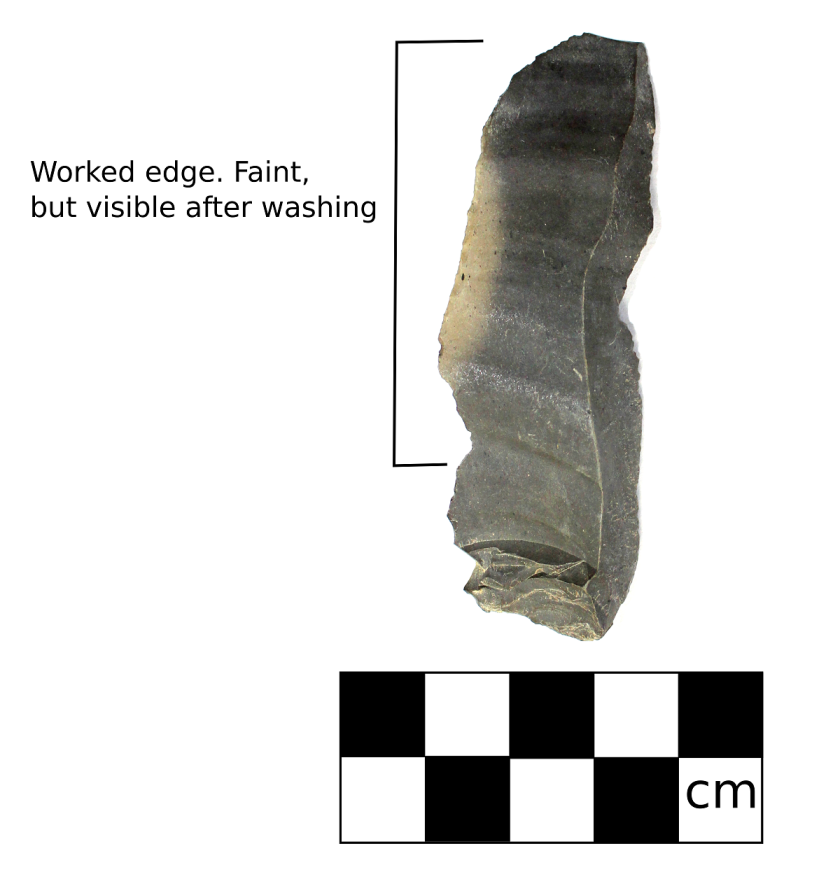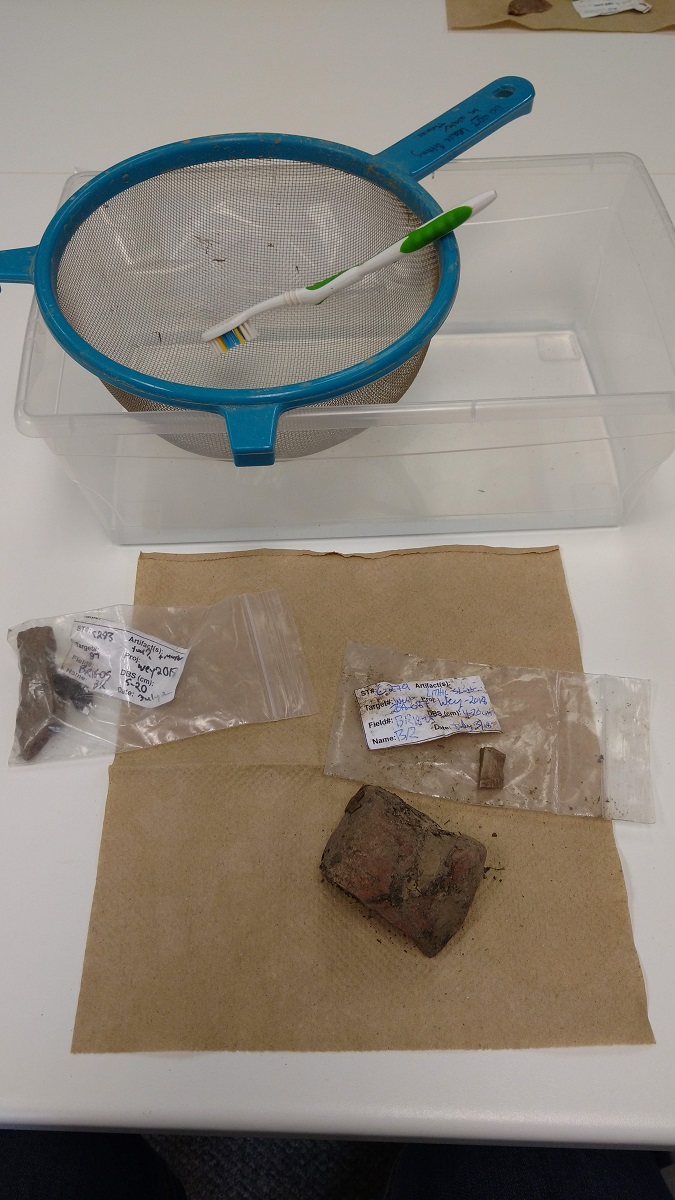The mud we slog through in the field doesn’t always stay in the field. It’s wrapped around a lot of the artifacts we find, and ends up in our sample bags. Once we get back from the field, we start the process of washing all the artifacts. As the sediment is brushed away, some of the artifact’s secrets are slowly revealed!
The mud can really hide what colour an artifact is. This flake was a dull grey brown until a “wet brush” made it’s way across one side. Underneath this layer is a beautiful pale quartzite that transitions into a orange-reddish pink the further washing was completed.

Washing all artifacts in water is not possible. Bone just absorbs the water, which makes it take longer to dry fully. Putting wet bone into a bag will ultimately end up destroying the artifact with mold. Tools we find in the field are also only “dry brushed”. This helps preserve any residue left on tools, which can be used in various residue analyses. A good brushing will help pull out little details though. This thumbnail scraper has been worked around almost its entire edge. The brushing (left) really helps it stand out.

Sometimes, however, a tool is only discovered after washing the mud away. Retouched flakes (as opposed to a formed tool) are often only discovered as the edges are cleaned, allowing the knapped edge to be fully exposed. The same goes for a utilized flake. These are flakes that look like a regular flake, but with closer inspection the edge has been chipped and worn from use. These are often called expedient tools. The flake’s sharp edge is used until it is dull, after which it is discarded.


